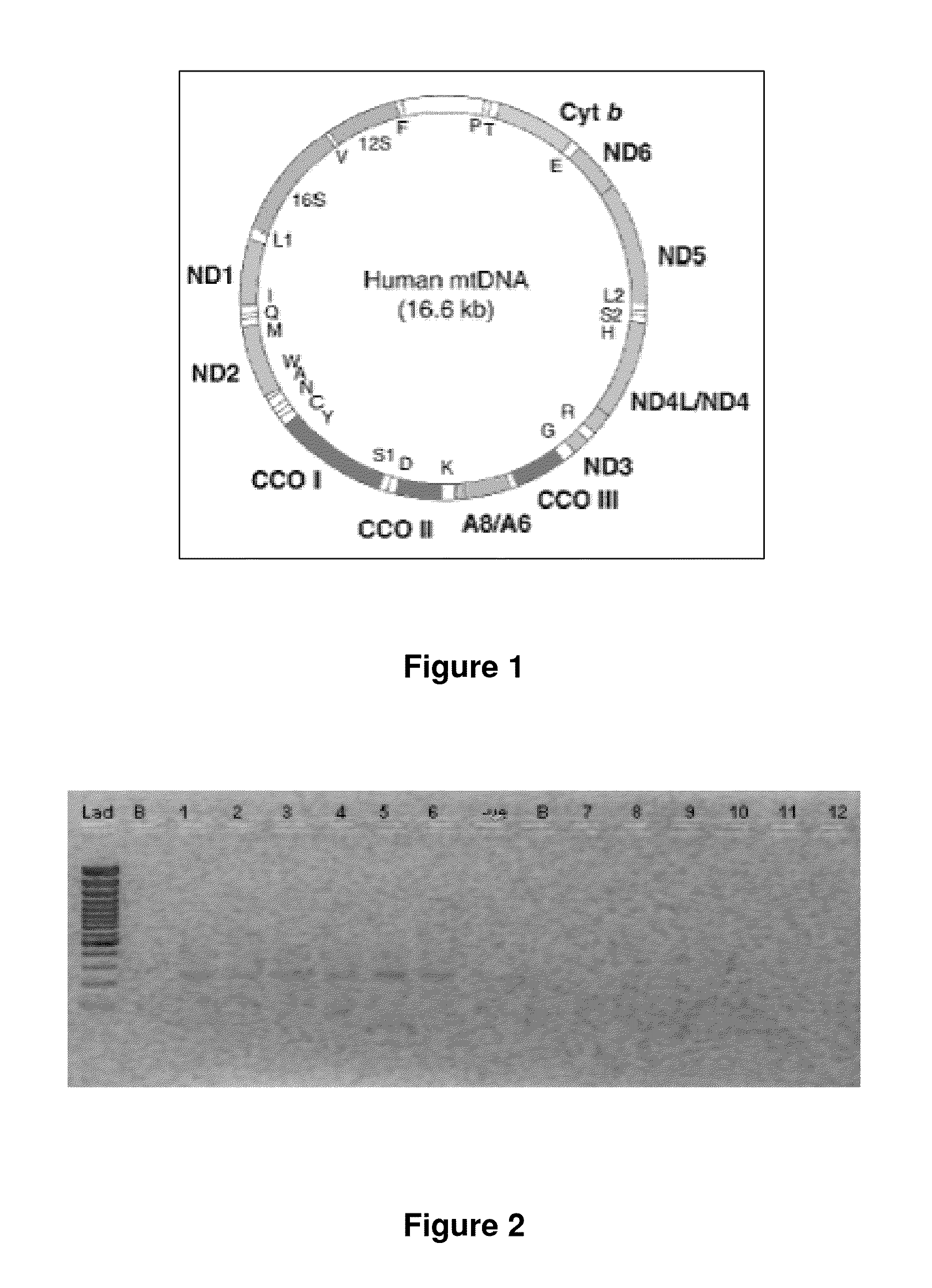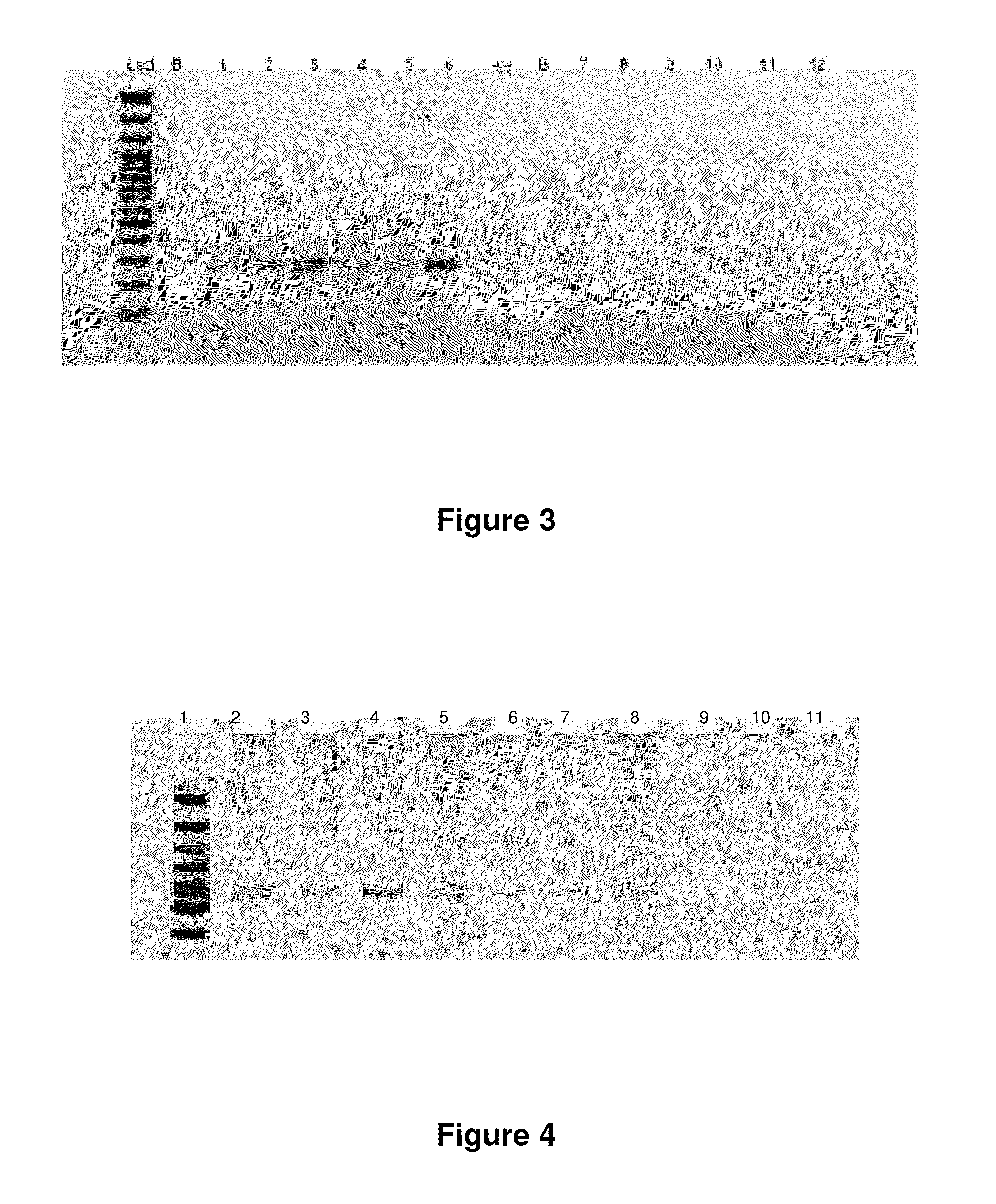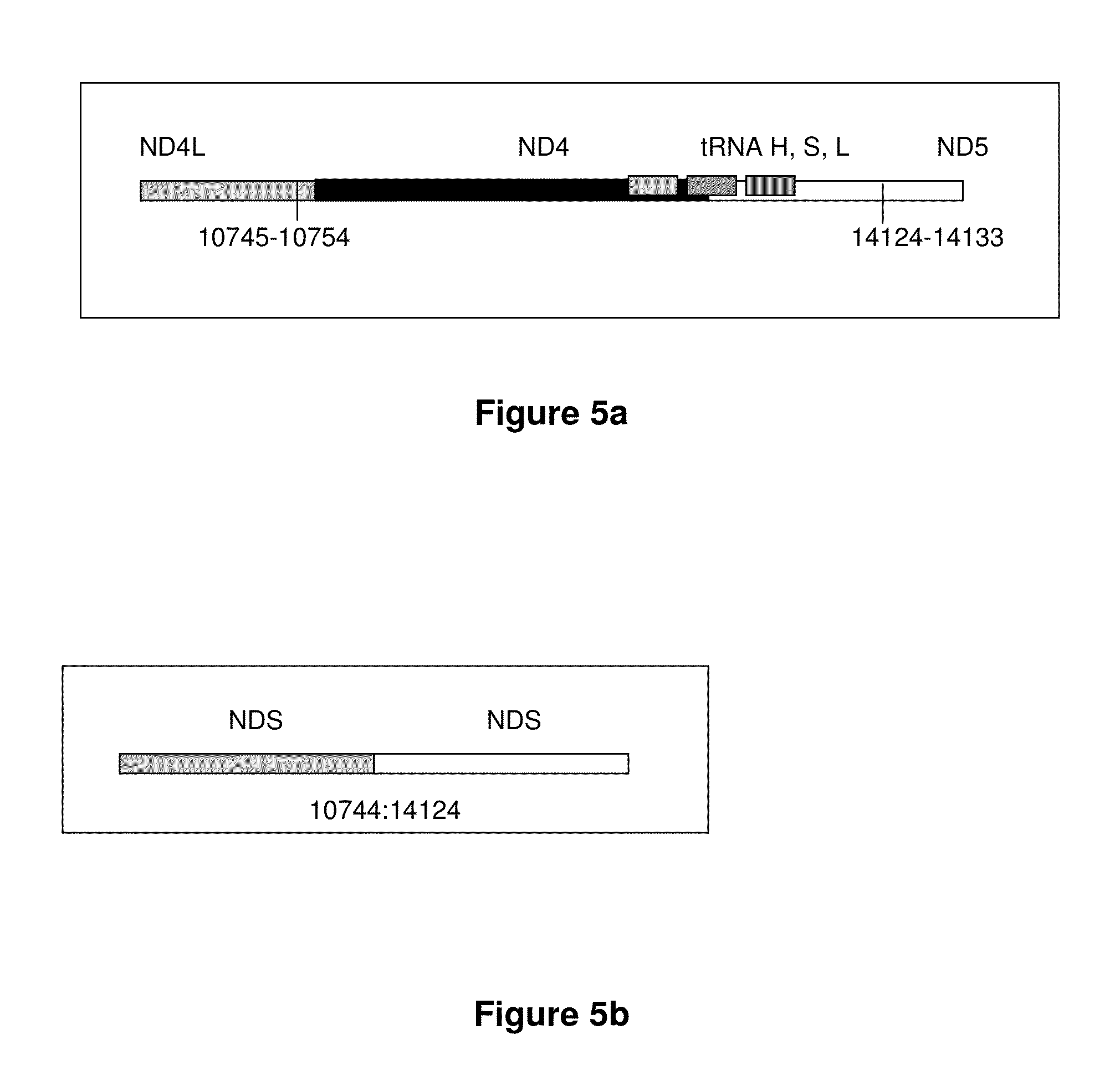Aberrant mitochondrial dna, associated fusion transcripts and translation products and hybridization probes therefore
a mitochondrial dna and mitochondrial genome technology, applied in the field of mitochondrial genomics and proteomics, can solve the problem of prone to deletion of sequences between these repeats
- Summary
- Abstract
- Description
- Claims
- Application Information
AI Technical Summary
Benefits of technology
Problems solved by technology
Method used
Image
Examples
example 1
Detection of Mitochondrial Fusion Transcripts
[0247]The mitochondrial 4977 “common deletion” and a 3.4 kb deletion previously identified by the present Applicant in PCT application no. PCT / CA2007 / 001711 (published under number WO 2009 / 039601, the entire contents of which are incorporated by reference) result in unique open reading frames having active transcripts as identified by oligo-dT selection in prostate tissue (FIGS. 2 and 3). Examination of breast tissue samples also reveals the presence of a stable polyadenylated fusion transcript resulting from the 3.4 kb deletion (FIG. 4).
[0248]Reverse Transcriptase-PCR Protocol for Deletion Transcript Detection
[0249]RNA Isolation cDNA Synthesis
[0250]Total RNA was isolated from snap frozen prostate and breast tissue samples (both malignant and normal samples adjacent to tumours) using the Aurum™ Total RNA Fatty and Fibrous Tissue kit (Bio-Rad, Hercules, Calif.) following the manufacturer's instructions. Since in this experiment, genomic DN...
example 2
Identification and Targeting of Fusion Products
[0257]Various hybridization probes were designed to detect, and further demonstrate the presence of novel transcripts resulting from mutated mitochondrial genomes, such as the 3.4 kb deletion. For this purpose, a single-plex branched DNA platform for quantitative gene expression analysis (QuantiGene 2.0™, Panomics™) was utilized. The specific deletions and sequences listed in this example are based on their relative positions with the entire mtDNA genome, which is recited in SEQ ID NO: 1. The nucleic acid sequences of the four transcripts to which the probes were designed in this example are identified herein as follows: Transcript 1 (SEQ ID NO: 19), Transcript 2 (SEQ ID NO: 20), Transcript 3 (SEQ ID NO: 21) and Transcript 4 (SEQ ID NO: 22).
[0258]An example of a continuous transcript from the 3.4 kb mitochondrial genome deletion occurs with the genes ND4L (NADH dehydrogenase subunit 4L) and ND5 (NADH dehydrogenase subunit 5). A probe ha...
example 3
Application to Prostate Cancer
[0262]Using the four fusion transcripts, i.e. transcripts 1 to 4, discussed above, two prostate tissue samples from one patient were analyzed to assess the quantitative difference of the novel predicted fusion transcripts. The results of the experiment are provided in Table 2 below, wherein “Homog 1” refers to the homogenate of frozen prostate tumour tissue from a patient and “Homog 2” refers to the homogenate of frozen normal prostate tissue adjacent to the tumour of the patient. These samples were processed according to the manufacturer's protocol (QuantiGene® Sample Processing Kit for Fresh or Frozen Animal Tissues; and QuantiGene® 2.0 Reagent System User Manual) starting with 25.8 mg of Homog 1 and 28.9 mg of Homog 2 (the assay setup is shown in Tables 5a and 5b).
[0263]Clearly demonstrated is an increased presence of mitochondrial fusion transcripts in prostate cancer tissue compared to normal adjacent prostate tissue. The fusion transcript is prese...
PUM
| Property | Measurement | Unit |
|---|---|---|
| concentrations | aaaaa | aaaaa |
| concentrations | aaaaa | aaaaa |
| pH | aaaaa | aaaaa |
Abstract
Description
Claims
Application Information
 Login to View More
Login to View More - R&D
- Intellectual Property
- Life Sciences
- Materials
- Tech Scout
- Unparalleled Data Quality
- Higher Quality Content
- 60% Fewer Hallucinations
Browse by: Latest US Patents, China's latest patents, Technical Efficacy Thesaurus, Application Domain, Technology Topic, Popular Technical Reports.
© 2025 PatSnap. All rights reserved.Legal|Privacy policy|Modern Slavery Act Transparency Statement|Sitemap|About US| Contact US: help@patsnap.com



